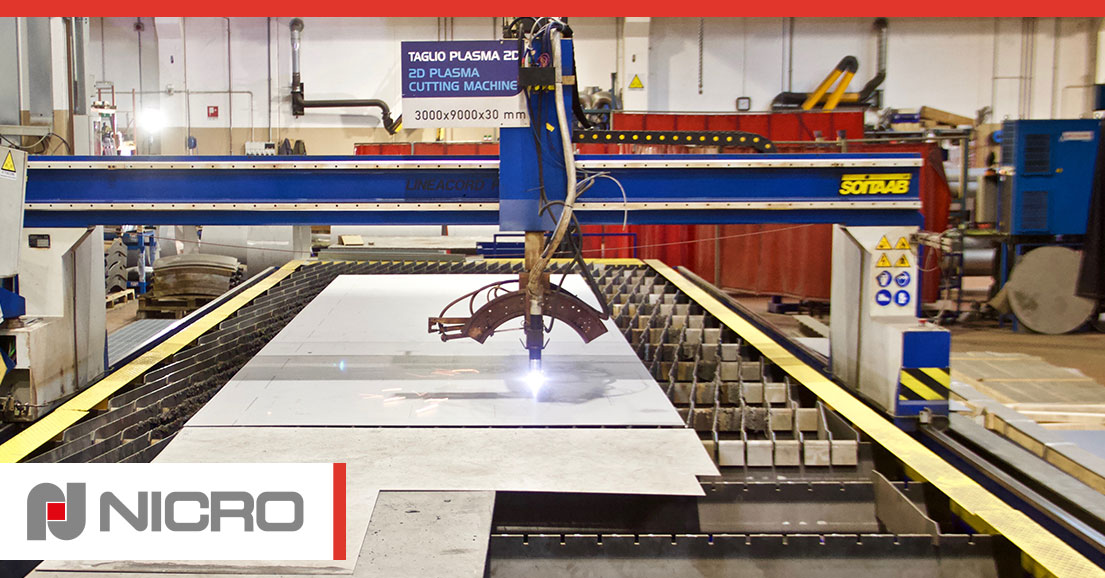The cutting for all types of metal: Plasma cutting
High cutting speed (compared to a water cutting), less heating of material and less deformation (compared to an oxy-fuel) and large thicknesses (compared to a laser cutting): these are some of the advantages of plasma cutting.
Nicro has a dedicated area for plasma cutting with a work surface of 12000X3000 mm for a maximum cutting capacity of 30 mm able to work also big pieces with different thickness.
But what is plasma cutting? What are the potential advantages of this technology? And which kind of metals can you work with it?
Plasma cutting: What is it?
Plasma cutting is an evolution of welding plasma. Plasma is a strong ionized gas jet reaching extremely high temperatures for melting any metal.
In 1955, Robert Gage introduced his patent, for a component (nozzle) used to concentrate the plasma jet for cutting any type of metal.
Nowadays this procedure is adopted to also cut metal sheets with big thickness and the advantages in time, costs and precision are considerable.
When you should choose plasma cutting: all the advantages.
Plasma cutting is ideal solution for:
- Cutting any type of metal.
- Cutting sheets with different thickness and size. The plasma jet can cut medium/thin materials; for example, Nicro cuts sheets up to 30 mm thickness.
- Cutting any type of surface, straight, bent surface or with angles.
- Cutting sheets and surfaces to be subjected later to other processes: plasma technology has a high cutting precision, but not always excellent, for this reason it is suggested for jobs in which the finishing of the piece is not a priority.
- Saving costs. Automated plasma cutting provides faster work than other types of cutting process, it has spare parts and maintenance interventions with lower costs than other technologies: this positively affects the cost of processing.
- Saving times. The cutting speed is proportional to the thickness of the surface to be machined but is still higher than the other types of cutting.
- Keeping the material properties. Plasma cutting, in fact, does not heat too much the material on which it operates and avoids excessive deformation, leaving unaltered the surface quality.
In our plasma cutting plant, the quality of the workmanship is the result of over forty years of experience in the production of customized components made in steel alloys with a high nickel content and the continuous updating of high qualified personnel.
The knowledge of raw materials and their properties is a priority factor which contributes to the cutting result and to an excellent final product.

